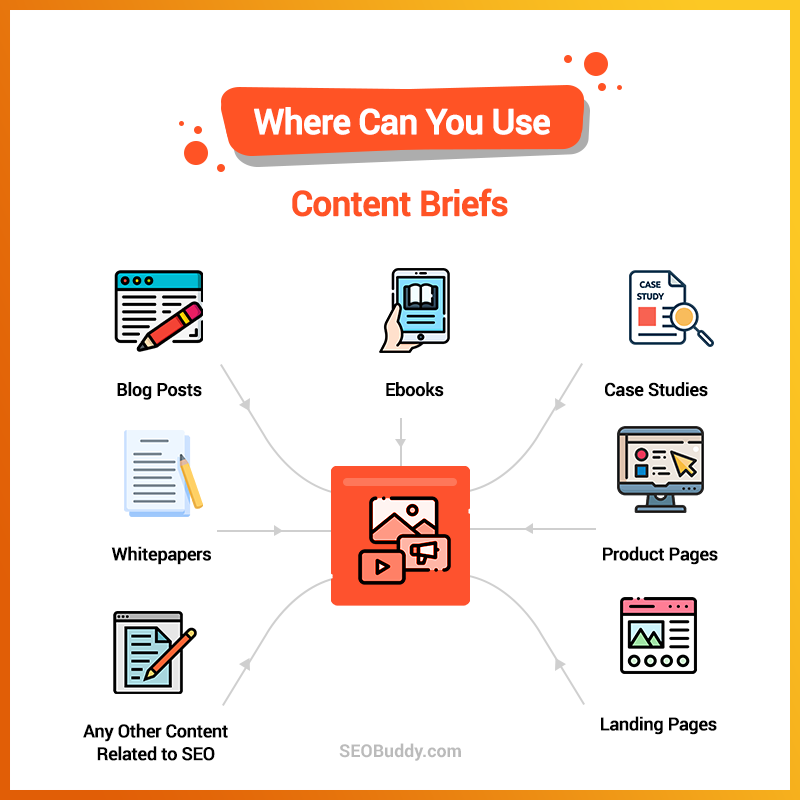Discover the secret weapon that will supercharge your blog’s success! Learn how comprehensive SEO content briefs work their magic.

Image courtesy of via DALL-E 3
Table of Contents
Welcome to the world of blogging! Today, we’re going to talk about a very important tool that can help your blog get seen by more people online. It’s called SEO, which stands for Search Engine Optimization. SEO is like a secret code that helps search engines like Google find your blog and show it to people who are searching for information.
What is SEO?
SEO is all about making your blog easy to find on search engines. When you use the right words and phrases that people are searching for in your blog posts, search engines like Google will rank your blog higher in their results. This means more people will see your blog and visit it, which is great for getting more readers!
Why Blogging Needs SEO
Using SEO in your blog is super important because it helps your blog stand out and attract more readers. Think of it like putting up a sign that says, “Hey, come check out my awesome blog!” Without SEO, your blog might not show up in search results, and it would be like having a cool party but forgetting to send out invitations. We don’t want that, right?
The Basics of an SEO Content Brief
When creating impactful and successful blog posts, one essential tool that bloggers use is an SEO content brief. But what exactly is an SEO content brief, and why is it so important? Let’s delve into the basics of this powerful tool that can transform your blog.
What’s in a Content Brief?
An SEO content brief is like a roadmap that guides you through the process of creating a blog post. It typically includes key elements such as relevant keywords, a clear understanding of your target audience, the goals you want to achieve with your post, and a structured outline for your content.
Why Use a Content Brief?
Using a content brief can help you stay organized and focused while writing your blog post. It ensures that you cover all the necessary aspects, such as incorporating the right keywords for SEO, addressing the needs of your audience, and aligning your content with your blog’s objectives. Ultimately, a content brief sets you up for success by providing a solid foundation for your writing.
Choosing the Right Keywords
When it comes to writing a blog post that will be seen by many people online, choosing the right keywords is crucial. Keywords are the terms or phrases that people type into search engines like Google when they are looking for information. By selecting the right keywords for your blog post, you can increase the chances of your content being found by the right audience.
Finding Popular Keywords
One way to find popular keywords is by using tools like Google Trends. These tools show you what people are searching for online and how often those terms are being used. By identifying popular keywords related to your blog post’s topic, you can tailor your content to match what people are looking for, increasing the chances of your post being seen.
Keyword Relevance
It’s not just about finding popular keywords; it’s also important that the keywords you choose are relevant to your blog’s topic and the audience you are trying to reach. If your keywords are not related to what your content is about, you may attract the wrong audience or struggle to rank in search results. Make sure the keywords you select accurately reflect the content of your blog post to ensure that it reaches the right people.
Understanding Your Audience
In order to create blog content that resonates with your readers, it’s essential to understand who your audience is. By knowing who you are writing for, you can tailor your content to suit their preferences and interests.

Image courtesy of via Google Images
Who is Your Audience?
Your audience is the group of people who will be reading your blog. They can be of different ages, interests, and backgrounds. To identify your audience, think about who would benefit the most from the information you are sharing. Are they students looking for study tips? Parents seeking parenting advice? By understanding who your audience is, you can create content that speaks directly to them.
What Does Your Audience Want?
Once you have identified your audience, the next step is to figure out what they want to learn or read about. You can do this by asking for feedback through comments on your blog posts, conducting surveys, or even looking at what topics are popular in your niche. By knowing what your audience is interested in, you can create content that is relevant and valuable to them.
Creating Quality Content
When it comes to running a successful blog, creating quality content is key. Quality content is not only engaging but also informative, keeping your readers coming back for more. Let’s explore some essential tips on how to craft content that stands out.
Writing Compelling Headlines
Headlines are the first thing readers see, so it’s crucial to make them attention-grabbing. A compelling headline entices the reader to click and read the rest of the post. Use active language, ask questions, or make bold statements to capture your audience’s interest.
Ensuring Content Is Easy to Read
Writing in a clear, simple, and concise manner is key to keeping your readers engaged. Break up your content into short paragraphs and use bullet points or numbered lists for easier readability. Avoid jargon and complex language that may confuse your audience.
Remember, quality content not only attracts readers but also keeps them on your blog longer. By crafting compelling headlines and ensuring your content is easy to read, you can create blog posts that resonate with your audience.
Structuring Your Blog Post
When it comes to writing a blog post, the way you structure your content is key. By organizing your thoughts in a clear and logical manner, not only will your readers find it easier to follow along, but search engines like Google will also appreciate the well-structured format. Here are some tips on how to effectively structure your blog post for better readability and SEO.

Image courtesy of via Google Images
Using Headings and Subheadings
Headings and subheadings play a crucial role in breaking down your content into easily digestible sections. Not only do they help readers navigate through your post, but they also signal to search engines what your content is about. Make sure to use relevant keywords in your headings to improve your blog’s SEO.
Paragraph and Sentence Length
Keep your paragraphs and sentences short and to the point. Long blocks of text can be intimidating for readers, especially for our younger audience. Breaking down your content into shorter paragraphs makes it easier for readers to skim through and absorb the information. Remember, when it comes to writing for a blog, less is often more!
Adding Visual Content
In addition to well-written text, adding visual content like images and videos to your blog can make a big difference in engaging your readers. Visual content helps break up large blocks of text, enhances understanding, and keeps your audience interested. Let’s explore how you can incorporate visual elements into your blog posts.
Choosing the Right Images
When selecting images for your blog posts, it’s important to choose visuals that are not only relevant to your content but also add value to the overall message you want to convey. High-quality, eye-catching images can grab your readers’ attention and make your blog post more visually appealing. Make sure to use images that are properly credited or are under a license that allows you to use them on your blog.
Incorporating Videos
Adding videos to your blog posts can take your content to the next level. Videos are a great way to demonstrate concepts, provide tutorials, or simply connect with your audience on a more personal level. They can help increase engagement and keep visitors on your blog longer. Make sure the videos you use are relevant to your content and are of good quality to enhance the overall reader experience.
Reviewing and Editing
After finishing your blog post, it’s essential to go back and proofread it carefully. Proofreading means looking for any spelling or grammar mistakes that might have slipped through while writing. Make sure to read your blog post slowly and carefully to catch any errors. You can also ask a friend or family member to read it over for you to get a fresh set of eyes on it.

Image courtesy of via Google Images
Ensuring SEO Optimization
Once you’ve proofread your blog post for errors, it’s time to check if it meets the SEO criteria outlined in your content brief. Remember to include your chosen keywords naturally throughout the post and in the headline. Check if your meta description accurately reflects the content of your post. Make sure your images have descriptive alt text that includes your keywords. By ensuring your blog post is properly optimized for SEO, you increase the chances of it being seen by more readers online.
Conclusion
In conclusion, using SEO content briefs can significantly transform the success of a blog. By understanding the importance of SEO and incorporating key elements into your content, you can attract more readers and increase visibility online. With a well-structured brief that includes relevant keywords, target audience information, and clear goals, your blog posts will be better organized and focused, leading to improved engagement and reach.
Want to turn these SEO insights into real results? Seorocket is an all-in-one AI SEO solution that uses the power of AI to analyze your competition and craft high-ranking content.
Seorocket offers a suite of powerful tools, including a Keyword Researcher to find the most profitable keywords, an AI Writer to generate unique and Google-friendly content, and an Automatic Publisher to schedule and publish your content directly to your website. Plus, you’ll get real-time performance tracking so you can see exactly what’s working and make adjustments as needed.
Stop just reading about SEO – take action with Seorocket and skyrocket your search rankings today. Sign up for a free trial and see the difference Seorocket can make for your website!
Frequently Asked Questions (FAQs)
What is the Most Important Part of an SEO Content Brief?
When it comes to an SEO content brief, the most crucial element is the selection of relevant keywords. Keywords help search engines understand what your blog post is about and match it with the right audience searching for that information. By choosing the right keywords that align with your content and audience, you increase the visibility and reach of your blog post.
How Long Should a Blog Post Be?
The ideal length of a blog post can vary depending on the topic and goals of your content. In general, blog posts that are around 1,000 to 2,000 words tend to perform well for SEO purposes. This length allows you to provide valuable information to your readers while also incorporating a variety of keywords naturally. However, the key is to focus on quality over quantity, ensuring that your content is engaging, informative, and relevant to your audience, regardless of its length.







